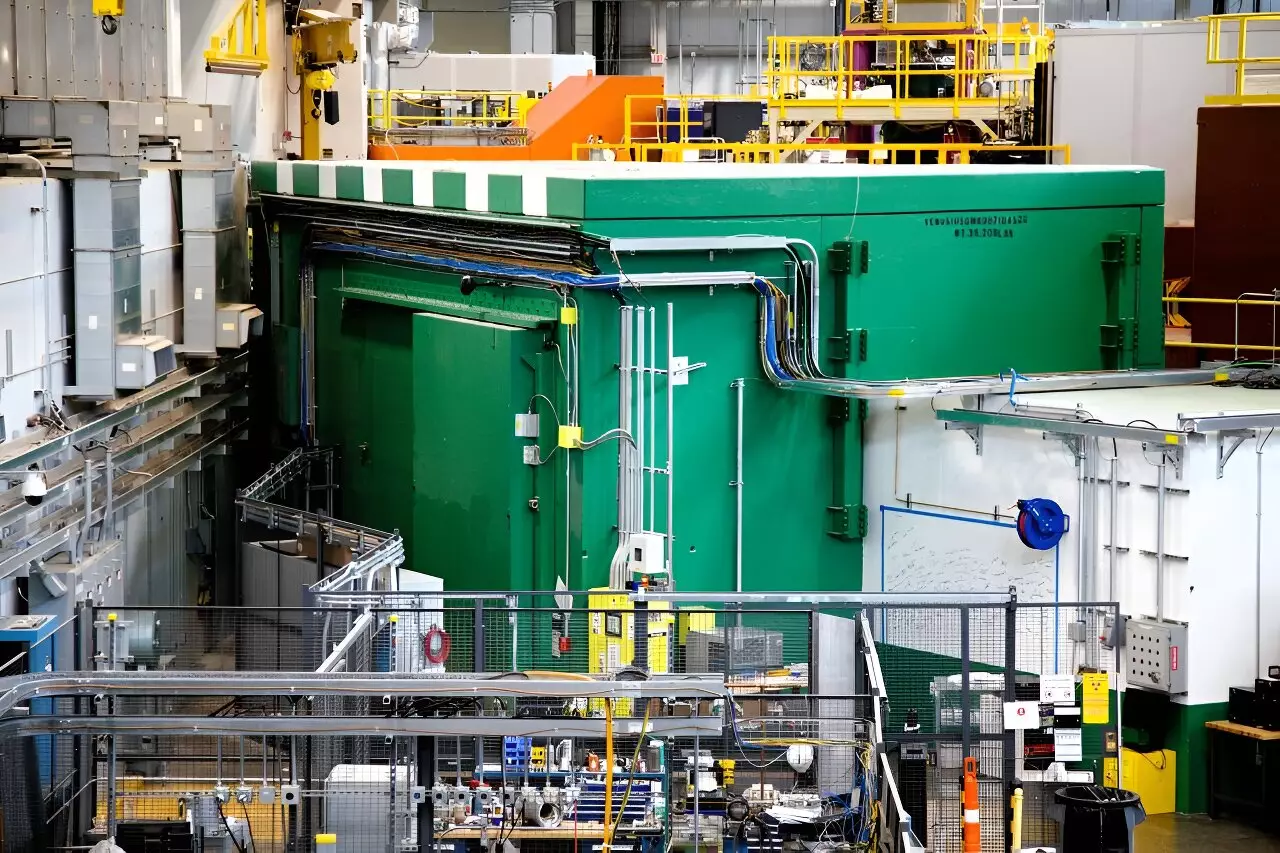The Oak Ridge National Laboratory (ORNL) has marked a significant advancement in the field of neutron imaging with the introduction of the Versatile Neutron Imaging Instrument, known as VENUS. Officially approved by the Department of Energy’s Office of Science, VENUS is poised to redefine the landscape of research across various scientific disciplines. As the brainchild of neutron scattering scientist Hassina Bilheux, this cutting-edge instrument aims to leverage advanced imaging techniques enhanced by artificial intelligence (AI) to deliver unprecedented insights, particularly in non-destructive testing of materials.
Equipped with the world’s most intense pulsed neutron beams, VENUS stands out due to its multifaceted capabilities. This instrument is engineered to enable high-resolution three-dimensional imaging that retains the integrity of delicate samples. By harnessing advanced computational methods, VENUS significantly reduces the amount of time required to produce 3D models from time-of-flight data. This innovation ensures that researchers can obtain results promptly, minimizing waiting periods that could stretch from days to weeks. Such expedited processes are particularly beneficial for research teams engaged in time-sensitive studies.
The implications of VENUS span a variety of domains. From improving energy storage solutions to developing drought-resistant plant varieties, the instrument is expected to contribute to a collective future in science that favors efficiency and innovation. By fostering an environment that promotes rapid experimentation and precise results, VENUS is set to support advancements in materials science, plant physiology, and energy storage technologies, among others.
The genesis of VENUS dates back to 2006 when Bilheux conceptualized an instrument that could obtain enhanced imaging while preserving the structural integrity of samples. A pivotal moment occurred when a collaboration with NASA allowed researchers to study fragile lunar rocks from the Apollo missions using neutron scattering techniques at ORNL’s High Flux Isotope Reactor (HFIR). Such partnerships exemplify the future-oriented vision of VENUS as a tool for solving complex scientific challenges, providing invaluable insights into early planetary formation and the quest for extraterrestrial water resources.
Neutron imaging is distinguished by its ability to pass through materials without causing damage, making it a profound choice for researchers investigating the microscopic structures of various samples. VENUS capitalizes on this unique property, allowing scientists to create detailed three-dimensional images and comprehensive microscale models. This capability is not only innovative but critical for advancing our understanding of material properties and their applications in real-world scenarios.
One of the core innovations central to VENUS is its integration of artificial intelligence. Recent progress in AI algorithms has made it possible for neutron imaging to be conducted with remarkable efficiency. ORNL’s collaboration with teams from Brookhaven National Laboratory and Purdue University has yielded advanced algorithms that enhance data acquisition processes. The incorporation of AI allows for an intelligent, autonomous approach to experimentation, offering new dimensions of speed and accuracy in data analysis that were previously unattainable.
Furthermore, this fusion of AI with neutron imaging technology holds the potential to revolutionize research methods in material science. Faster and more accurate data processing means that researchers can engage more fully with their experiments, minimising interruptions and maximizing their capacity for discovery.
The realization of VENUS is a testament to the collaborative spirit embedded within the scientific community. The formation of a VENUS Advisory Committee has been instrumental from the project’s inception. The physical construction commenced in 2019 and persisted through the challenges posed by the worldwide pandemic. As we approach the final phases of this ambitious project, the collective enthusiasm of the ORNL team embodies the dedication required to bring such a complex instrument to life.
As the ORNL team prepares for user beamtime anticipated for the latter half of 2025, the excitement is palpable. Researchers worldwide are keen to tap into VENUS’s unique capabilities. With its promise of delivering high-quality, rapid insights into atomic structures across a slew of disciplines, VENUS epitomizes the innovation driving modern science forward.
VENUS is not just another research tool; it represents a paradigm shift in how neutron imaging can influence multiple fields of study. By combining advanced imaging technology with artificial intelligence, ORNL is not only paving the way for immediate applications in diverse scientific areas but also establishing the groundwork for future explorations that could hold profound implications for our understanding of materials and the universe. As scientists look to 2025 and beyond, the excitement surrounding VENUS signals an invigorated commitment to scientific discovery.


Leave a Reply